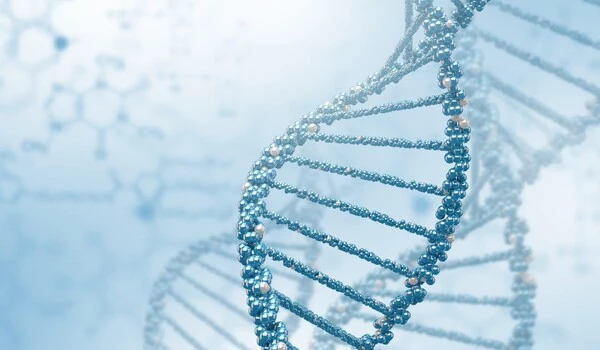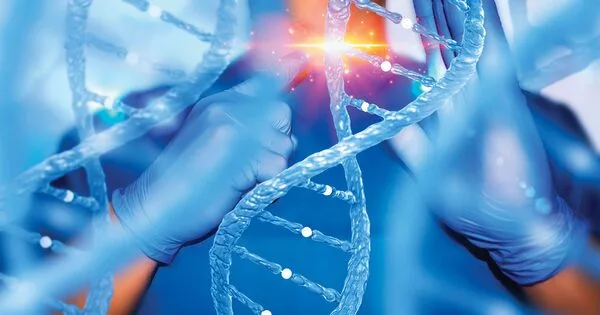Base editing is a gene editing technique that allows researchers to make precise changes to the DNA of cells. It involves the use of a modified version of the CRISPR/Cas9 system, which can target specific locations in the genome and make targeted changes to the DNA sequence.
A mutation in the CD3D gene causes CD3 delta SCID, which prevents the production of the CD3 delta protein, which is required for the normal development of T cells from blood stem cells. Researchers demonstrated that base editing, a new genome editing technique, can correct the mutation that causes CD3 delta SCID in blood stem cells and restore their ability to produce T cells. Base editing is a type of genome editing that allows scientists to correct single-letter DNA mutations.
A new UCLA-led study suggests that advanced genome editing technology could be used to treat the rare and deadly genetic disease CD3 delta severe combined immunodeficiency as a one-time treatment. A mutation in the CD3D gene causes the condition, also known as CD3 delta SCID, by preventing the production of the CD3 delta protein, which is required for the normal development of T cells from blood stem cells.
Babies born with CD3 delta SCID are unable to fight infections and often die within the first two years of life if untreated. The only available treatment at the moment is bone marrow transplant, but the procedure is fraught with danger.
This project was a beautiful picture of team science, with clinical need and scientific expertise aligned. Every team member was critical to the success of this project.
Professor Crooks
According to a study published in Cell, a new genome editing technique known as base editing can correct the mutation that causes CD3 delta SCID in blood stem cells and restore their ability to produce T cells.
The potential therapy is the result of a collaboration between the laboratories of Dr. Donald Kohn and Dr. Gay Crooks, both senior authors of the study and members of UCLA’s Eli and Edythe Broad Center of Regenerative Medicine and Stem Cell Research.
Kohn’s lab has previously developed successful gene therapies for a variety of immune system deficiencies, including other types of SCID. He and his colleagues focused on CD3 delta SCID at the request of Dr. Nicola Wright, a pediatric hematologist and immunologist at the Alberta Children’s Hospital Research Institute in Canada, who reached out in search of a better treatment option for her patients.
CD3 delta SCID is prevalent in the Mennonite community that migrates between Canada and Mexico. “Because newborns are not screened for SCID in Mexico, I often see babies who have been diagnosed late and are returning to Canada quite sick,” Wright said When Kohn presented Wright’s request to his lab, Grace McAuley, then a research associate who joined the lab at the end of her senior year at UCLA, stepped up with a daring idea.

Study uses base editing to correct mutation that causes rare immune deficiency
“Grace proposed we try base editing, a very new technology my lab had never attempted before,” said Kohn, a distinguished professor of microbiology, immunology and molecular genetics, and of pediatrics. Base editing is an ultraprecise form of genome editing that enables scientists to correct single-letter mutations in DNA. DNA is made up of four chemical bases that are referred to as A, T, C and G; those bases pair together to form the “rungs” in DNA’s double-helix ladder structure
While other gene editing platforms, like CRISPR-Cas9, cut both strands of the chromosome to make changes to DNA, base editing chemically changes one DNA base letter into another — an A to a G, for example — leaving the chromosome intact.
“I had a very steep learning curve in the beginning, when base editing just wasn’t working,” said McAuley, who is now pursuing an M.D.-Ph.D. at UC San Diego and is the study’s co-first author. “But I kept pushing forward. My goal was help get this therapy to the clinic as fast as was safely possible.”
McAuley sought advice from the Broad Institute’s David Liu, the inventor of base editing, on how to assess the technique’s safety for this specific application. McAuley eventually discovered a base editor that was extremely effective at correcting the disease-causing genetic mutation.
Because the disease is so uncommon, obtaining patient stem cells for the UCLA study was extremely difficult. Wright provided the researchers with blood stem cells donated by a CD3 delta SCID patient undergoing a bone marrow transplant, which gave the project a boost.
Across three laboratory experiments, the base editor corrected an average of nearly 71% of the patient’s stem cells. McAuley then collaborated with Dr. Gloria Yiu, a UCLA clinical instructor in rheumatology, to see if the corrected cells could produce T cells. Yiu used artificial thymic organoids, which are stem cell-derived tissue models developed by Crooks’ lab that mimic the environment of the human thymus – the organ in which blood stem cells differentiate into T cells.
The corrected blood stem cells produced fully functional and mature T cells when they were introduced into the artificial thymic organoids. “Because the artificial thymic organoid supports the development of mature T cells so efficiently, it was the ideal system to show that base editing of patients’ stem cells could fix the defect seen in this disease,” said Yiu, who is also a co-first author of the study.
McAuley then tested the longevity of the corrected stem cells by transplanting them into a mouse. Four months after transplant, the corrected cells remained, indicating that base editing had corrected the mutation in true, self-renewing blood stem cells. The findings imply that corrected blood stem cells could live for a long time and produce the T cells that patients require to live healthy lives.
“This project was a beautiful picture of team science, with clinical need and scientific expertise aligned,” Crooks, a pathology and laboratory medicine professor, said. “Every team member was critical to the success of this project.”





